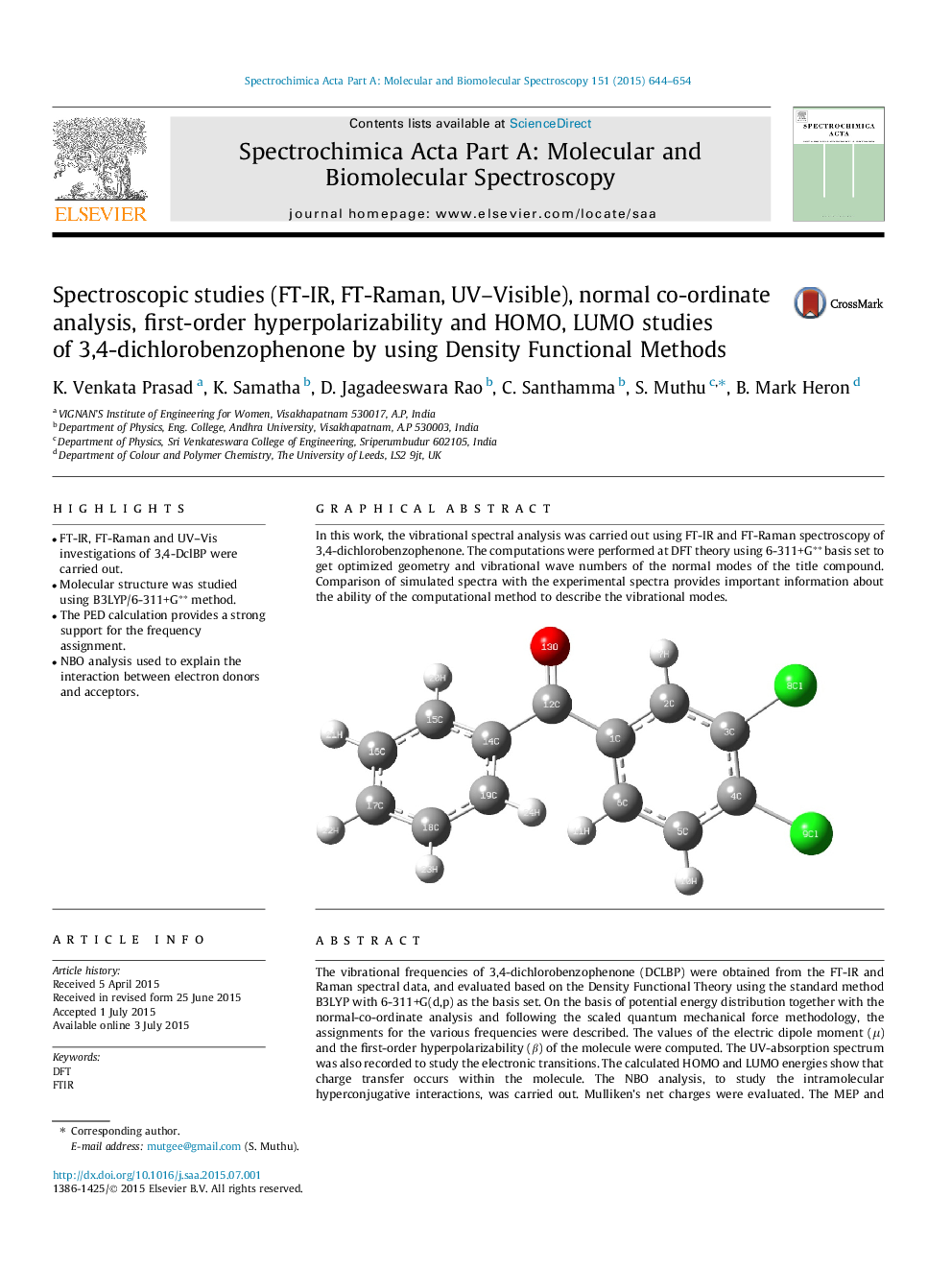| کد مقاله | کد نشریه | سال انتشار | مقاله انگلیسی | نسخه تمام متن |
|---|---|---|---|---|
| 1230124 | 1495218 | 2015 | 11 صفحه PDF | دانلود رایگان |

• FT-IR, FT-Raman and UV–Vis investigations of 3,4-DclBP were carried out.
• Molecular structure was studied using B3LYP/6-311+G∗∗ method.
• The PED calculation provides a strong support for the frequency assignment.
• NBO analysis used to explain the interaction between electron donors and acceptors.
The vibrational frequencies of 3,4-dichlorobenzophenone (DCLBP) were obtained from the FT-IR and Raman spectral data, and evaluated based on the Density Functional Theory using the standard method B3LYP with 6-311+G(d,p) as the basis set. On the basis of potential energy distribution together with the normal-co-ordinate analysis and following the scaled quantum mechanical force methodology, the assignments for the various frequencies were described. The values of the electric dipole moment (μ) and the first-order hyperpolarizability (β) of the molecule were computed. The UV-absorption spectrum was also recorded to study the electronic transitions. The calculated HOMO and LUMO energies show that charge transfer occurs within the molecule. The NBO analysis, to study the intramolecular hyperconjugative interactions, was carried out. Mulliken’s net charges were evaluated. The MEP and thermodynamic properties were also calculated. The electron density-based local reactivity descriptor, such as Fukui functions, was calculated to explain the chemical selectivity or reactivity site in 3,4-dichlorobenzophenone.
In this work, the vibrational spectral analysis was carried out using FT-IR and FT-Raman spectroscopy of 3,4-dichlorobenzophenone. The computations were performed at DFT theory using 6-311+G∗∗ basis set to get optimized geometry and vibrational wave numbers of the normal modes of the title compound. Comparison of simulated spectra with the experimental spectra provides important information about the ability of the computational method to describe the vibrational modes.Figure optionsDownload as PowerPoint slide
Journal: Spectrochimica Acta Part A: Molecular and Biomolecular Spectroscopy - Volume 151, 5 December 2015, Pages 644–654